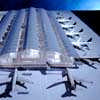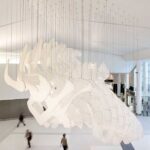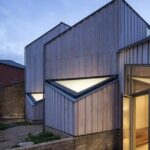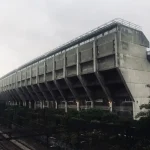Heathrow Airport Terminal 5 London Image, Architect, T5 Design Picture, Information
Heathrow Airport Terminal 5
T5 London Building design by Richard Rogers architect, England, UK
15 Jun 2008
Concept Images from RSHP in 2008:
Concept 1; 2; 3
Design: Richard Rogers architect
Heathrow Airport Terminal 5 Building
Concept 4: Section; roof structure being raised into position; transparent façades
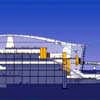
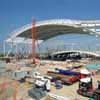
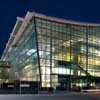
Architects: Rogers Stirk Harbour + Partners
TERMINAL 5
Design
Designed by the Rogers, Stirk Harbour & Partners, T5 marks the start of a new era for Heathrow and for passengers using the airport. T5 is designed to perfectly combine functionality with aesthetics. The passenger experience and journey through the buildings have been at the forefront of design, while consideration has also been given to architectural merit, environmental issues and maintainability.
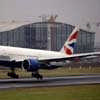
Heathrow Airport Terminal 5 Photo from Heathrow Media Centre 290108
The route a passenger takes through the terminal is coherent, seamless – there is a natural directional flow to the building from check-in to gate and from arrivals-gate to the arrivals hall.
The terminal will also contain some ‘expo’ space to complete the experiential qualities for the passenger.
To add to the overall ambient environment, the lighting inside the terminal building can be programmed to different settings according to season, time of day and weather conditions.
The main terminal building
T5 is the biggest free standing building in the UK. The building is 40m high, 396m long and 176m wide. The single span wave roof held up by 22 huge steel legs and nodes, not only creates a great, light, open and airy space, but provides a distinctive architectural feature and fantastic views of the airfield.
The facades are fully glazed with over 30,000sq metres of glass or 5,500 glass panels. The facades lean out at an angle of 6.5 degrees, giving the building its distinct shape. The glass itself is coated with a film which controls the amount of sunlight entering the building. To further manage the temperature of the interior brise soleil panels have been fitted to the exterior. These are fixed aluminium louvres that act like sun shades, deflecting glare.

Heathrow Airport Terminal 5 Photo from Heathrow Media Centre 290108
The interchange plaza
A plaza separates the multi-storey carpark from the main terminal. It is a unique design feature and space (30m wide and the length of the building) and will be landscaped with 40 mature plane trees, fountains, seating areas, artworks, even the possibility of extending some of the cafe areas outdoors when the weather permits.
Underneath the north end of the plaza is the rail station. The station houses 6 platforms, two for the Heathrow Express, two for LU Piccadilly Line and two which are built and safeguarded in advance of a scheme to link Heathrow by rail to the West (AirTrack, a scheme under consideration would connect to the west with the main line at Staines.) The station is covered by a transparent roof (made from ETFE like the Eden Project biomes) which enable natural light to flood down onto the ends of the platforms. Five 50-person lifts will transport passengers straight up to the departures hall.
Multi-storey car park (MSCP)
The drop off forecourts are integrated into the top level of the MSCP which is connected to the departures hall of the terminal building by 4 glazed ‘sky bridges’. The T5 bus and coach station forms the ground floor level of the MSCP.
The car park has 3800 spaces, and we’ve invested in a range of technologies to ensure using it is stress free including for example a car finder service to help passengers find their car quickly, or bay monitoring to help you find a space more quickly.
Departures lounge
Once through security and airside, passengers are afforded airfield views from every angle. The departures lounge is double height, adding to the sense of space and light. The main seating areas are arranged in two symmetrical squares at either end. There are no gate rooms at T5, rather passengers can enjoy the departures lounge right up until they are called to board their flight.
Environment
During construction great attention has been paid to minimising environmental impact. 85% of waste on the project has been recovered thanks mainly to the segregation of materials during construction. Aggregates produced from demolition and waste concrete have been crushed and recycled and over 300,000 tonnes of demolition and waste concrete has been processed into aggregate and re-used on site in addition to 80,000 tonnes of recycled and secondary aggregate sourced from other projects. Crushed green glass from domestic recycling banks has been used as a sub base in the construction of temporary sites and pulverised fuel ash from power stations was used in the manufacture of the concrete on site.
Reducing environmental impact during operation
Waste heat from an existing combined heat and power plant is being piped to the T5 energy centre to provide the building with 85% of its heat on demand. This saves around 11,000 tonnes of CO2/yr.
Inside the terminal, the lighting is controlled digitally. Individual lights can be turned on, off or dimmed according to the requirements of an area at a particular time of day or during certain weather conditions. The baggage systems and escalators benefit from variable speed drives, slowing down the systems when not in use.
The terminal itself is glazed on all facades, reducing the need for artificial lighting. South-facing facades benefit from louvres, angled in such a way as to prevent the summer sun penetrating the building.
Energy efficient fittings have been specified throughout the terminal building and only centrally chilled water, supplied by zero-carbon-rated ammonia chillers in the purpose-built T5 energy centre will be used to cool the building, limiting the need for individually chilled air conditioning units and refrigerators throughout the building.
Water from T5’s rainwater harvesting and groundwater boreholes is being used for non-potable uses, reducing the demand on the public water supply by 70%. The harvesting scheme re-uses up to 85% of the rainfall that falls on the T5 campus.
All the toilets in T5 have low flush capability with flush volumes as low as 4 litres, and all taps and showers are fitted with water saving devices such as automatic on/off sensors and aerated flow taps and shower heads.
PCA (pre-conditioned air) is available, which is a first for Heathrow on all T5 stands. When an aircraft comes in to a stand, a large hose, 6 inches in diameter, can be plugged in to pump air into the cabin. When used with fixed electrical ground power (FEGP) the aircraft can be completely shut down when on the stand and cool air can still be pumped in for passengers, rather than a generator being used and means there are no exhaust emissions.
Transforming the rest of Heathrow
Before Terminal 5 is finished, the next phase of Heathrow’s development – T3 Futures – will be completed in November. The works are redeveloping the front of Terminal 3, with a new forecourt and roads and a big canopy at the front that will house self-service check-in kiosks, extending the depth of the terminal.
After T5 the next big project will be Heathrow East for which BAA has been given planning permission. Heathrow East is not about new capacity, it will replace Terminals 1 and 2.
By 2012 almost the entire airport will be either re-built, refurbished or redesigned. A £6bn investment plan will deliver world class facilities which passengers expect including more space for security and improved environmental performance.
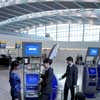
Image from Caro Communications 8 Feb 2008
Heathrow Airport Terminal 5 London
Heathrow Airport Terminal 5 Photos
Heathrow Airport Terminal 5 architect – Richard Rogers
Heathrow Airport Terminal 5 Building
Location: Heathrow Airport Terminal 5, London, England, UK
London Buildings
Contemporary London Architecture
London Architecture Links – chronological list
London Architecture Tours by e-architect
Airport Architecture
Heathrow Airport Hotel
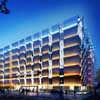
image : Foster + Partners
Barajas Airport by Richard Rogers
Kingston Academy Regeneration, Richmond Road, Kingston upon Thames
Design: Astudio
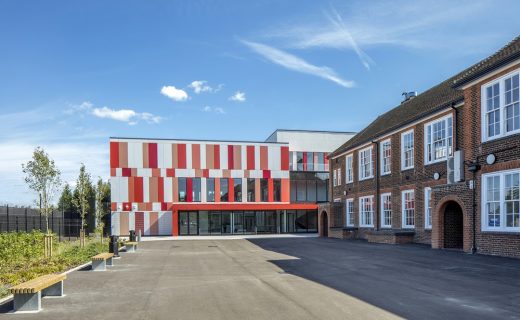
image courtesy of architecture office
Kingston Academy
Comments / photos for the Heathrow Airport Terminal 5 Building design by Richard Rogers architect of RSHP page welcome



